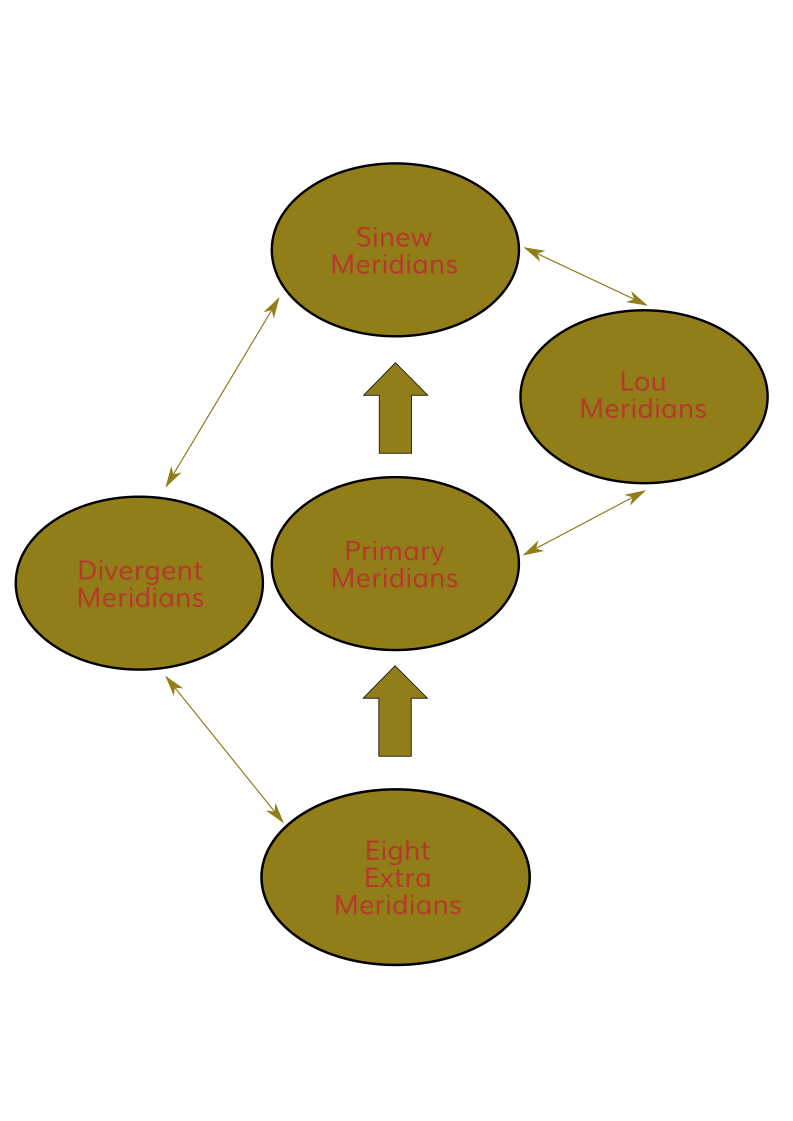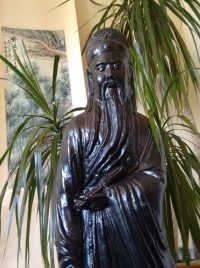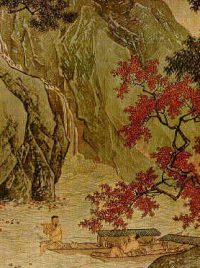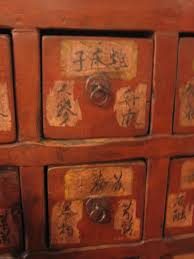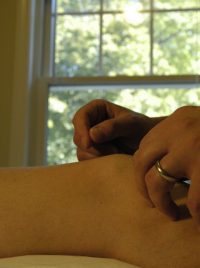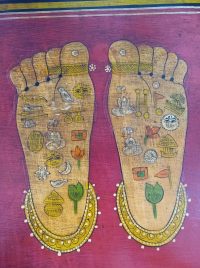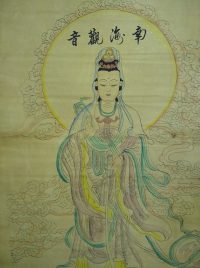
Classical Acupuncture is a profoundly effective medical system that originated during China’s Warring States and Han Dynasty (475 BCE-220 CE). It was during this time that the primary theories and principles of Chinese medicine were formulated and written down, to later become the primary medical texts for all of Chinese medicine. Classical Acupuncture adheres to the teachings in ancient Chinese medical texts and reflects a vast richness, complexity and wisdom developed throughout a 3,000-year history.
Despite the critical importance of these early texts, an understanding of the knowledge contained within these them has largely been lost. This is due to historical and cultural factors. The most recent being China’s Cultural Revolution in the 1960’s and 1970’s. In the quest for communist uniformity, important and unique aspects of the medicine were simply omitted. Traditional Chinese Medicine (TCM), the most commonly practiced type of acupuncture today, was developed under twentieth century communistic rule as a standardized and simplified form of acupuncture.
An important example of the information that has almost been forgotten to antiquity are the Complement Channels, which are key features described and discussed in the Classical teachings. They are four additional meridian systems that are not taught in most acupuncture schools, and are not known by most practicing acupuncturists today. These additional meridian systems allow for precisely tailored and highly effective treatments that enable the practitioner to treat a very wide spectrum of medical conditions, especially difficult and challenging disorders.
The Three Energetic Levels of Classical Acupuncture
To start to understand Classical Acupuncture you first have to understand the three different energetic levels.
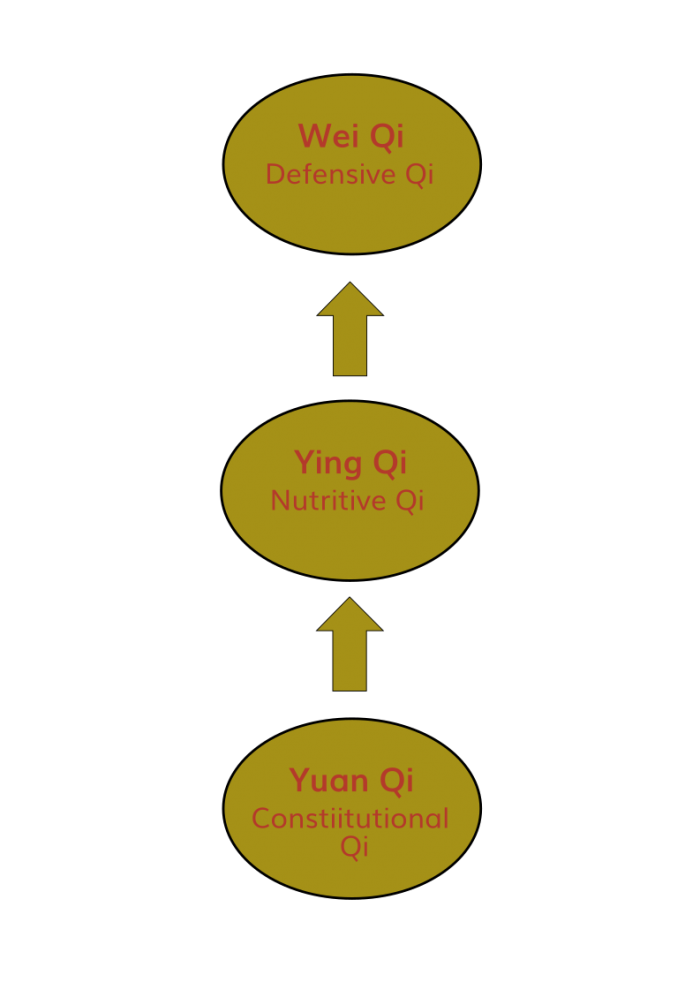
Wei Qi or Defensive Qi is the outermost layer of the body’s energetic levels and represents our relationship to the exterior, the environment. It is the body’s ability to protect itself. It is very instinctual, unconscious with no cognitive aspect. It represents our ability to adapt, acclimate to climates, situations and external threats, as well as to extend or move out into the world.
Ying Qi or Nutritive Qi is the set of resources that allows us to go forth and meet the day. Its fundamental components permit life to transpire: survival (breathing, eating, sleeping), self realizations (interacting with life, adding purpose, establishing meaningful relationships) and, lastly, development of paradigms about life (differentiation of patterns, needs, desires, longings and the meaning of one’s life: Maturity). It is cognitive, can be learned, and has a very strong cultural, social component. The zest of life is the willingness to believe in the world and ourselves. It supports Wei Qi.
Yuan Qi or Constitutional Qi is our nature. A combination of our Ancestral Qi (hereditary) and Cosmic Qi (Environmental, Spiritual, Karmic) present during time of conception. It is pre-destined, and interested in the evolution and adaptation of the species. It is the energetic trust fund for the body. It supports Ying Qi.
The three energetic levels allow for an individual to fulfill their destiny. Yuan Qi is their fate, Ying Qi is the resources and manifestations of that fate, while Wei Qi is the outward expression of that fate. Can one reckon with their nature and cultivate a relationship with their destiny? To be fulfilled is to appreciate your life, your destiny.
The Five Meridian Systems Of Classical Acupuncture
The meridians are channels / pathways and each one deals with a different aspect of the three Energetic Levels and allows movement between them.
The 12 Sinew Meridians are the most superficial layer of the energy on the body and cover the individual from head to toe. They involve the skin and a top layer of musculature, ligaments and tendons. They deal with “external” conditions, and are used for acute and semi-acute muscular disorders, colds and flu, burns, dermatology, sinusitis, environmental allergies.
The 12 Primary Meridians are responsible for the post-natal production, nourishment, storage and usage of life’s resources to sustain life on a day-to-day basis. They contain all the organ systems and their functions of the body. They are conduits of Wei Qi and Ying Qi, and can access Yuan Qi. They represent how we’re living our lives and the choices we make. They deal with “internal conditions” and are used to treat a very wide spectrum of illness. These are the 12 meridians of Traditional Chinese Medicine (TCM).
The 16 Luo Meridians are the conduits of Ying and are created by the body in form of varicosities, conditions used for emotional, psychological, blood and some musculoskeletal disorders. These areas are created when the body over burdens itself maintaining one’s perspective. They are the “junk drawer” in which we store all experiences and thoughts that we choose not to resolve due to lack of resources, other obligations, or idealisms.
The 12 Divergent Meridians protect the organ systems. If the Wei Qi is not strong enough to eliminate the pathogen or the pathogen is too strong and overpowers the Wei Qi, the threat will attempt to move deeper in the body, diverting the pathology in an attempt to keep it asymptomatic. This process bypasses Ying Qi Level (level of consciousness) and is very unconscious. These conditions are chronic and recurring and range from chronic musculoskeletal conditions, auto-immune diseases, to gynecological conditions, gastro-intestinal and respiratory diseases.
The 8 Extraordinary Meridians deal with Yuan Qi and are the blueprint and orientation to one’s life and destiny. They treat hereditary issues, the individual’s relationship to their fate, and serve as ditches which the body utilizes to help drain pathology. These Meridians deal with life lessons, helping us to further adapt and grow, as well as any issues dealing with what we are born into such as ethnicity, race, and gender. Yuan Qi is about growth, maturity and subsequent decline and coming to terms with mortality.
